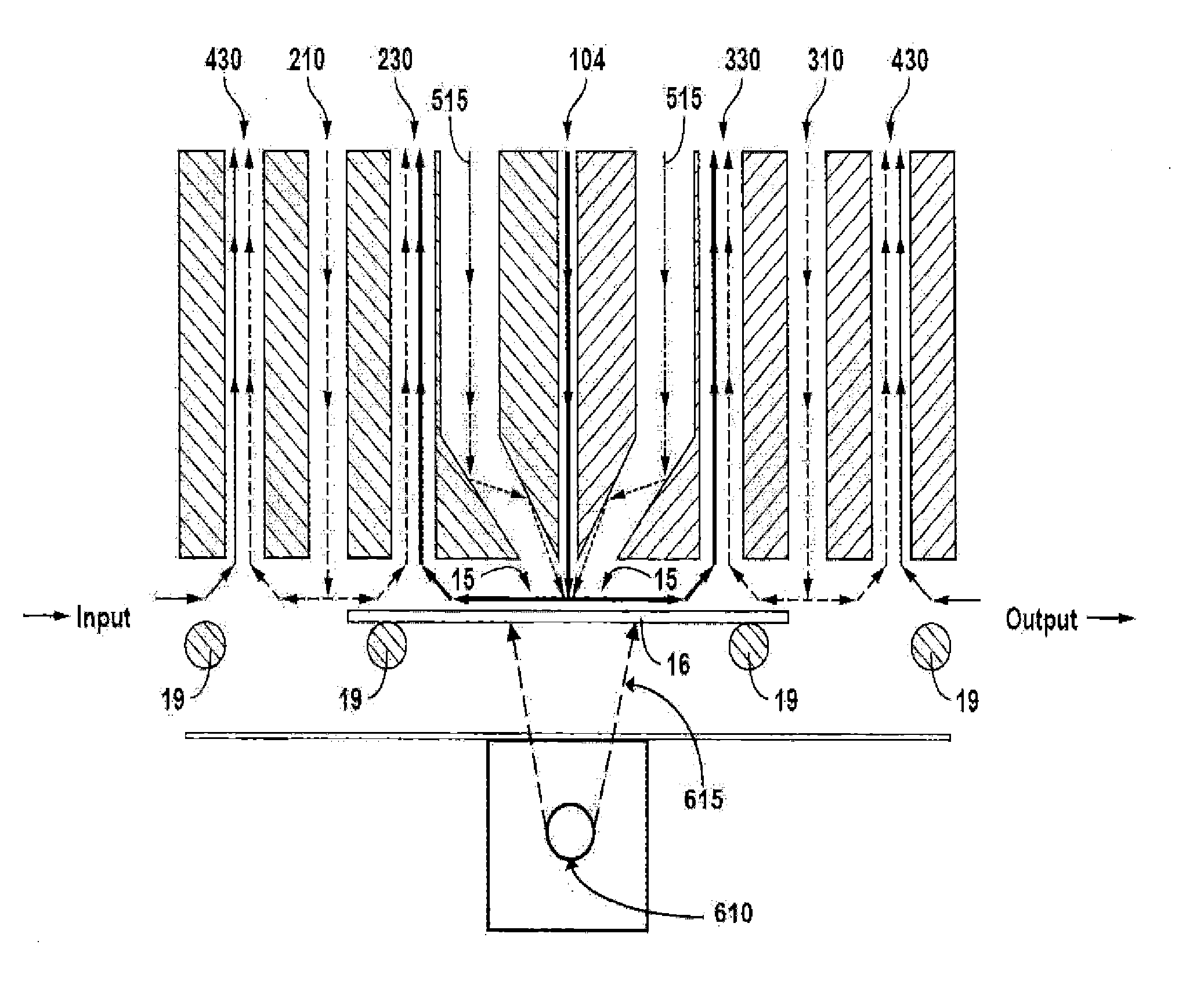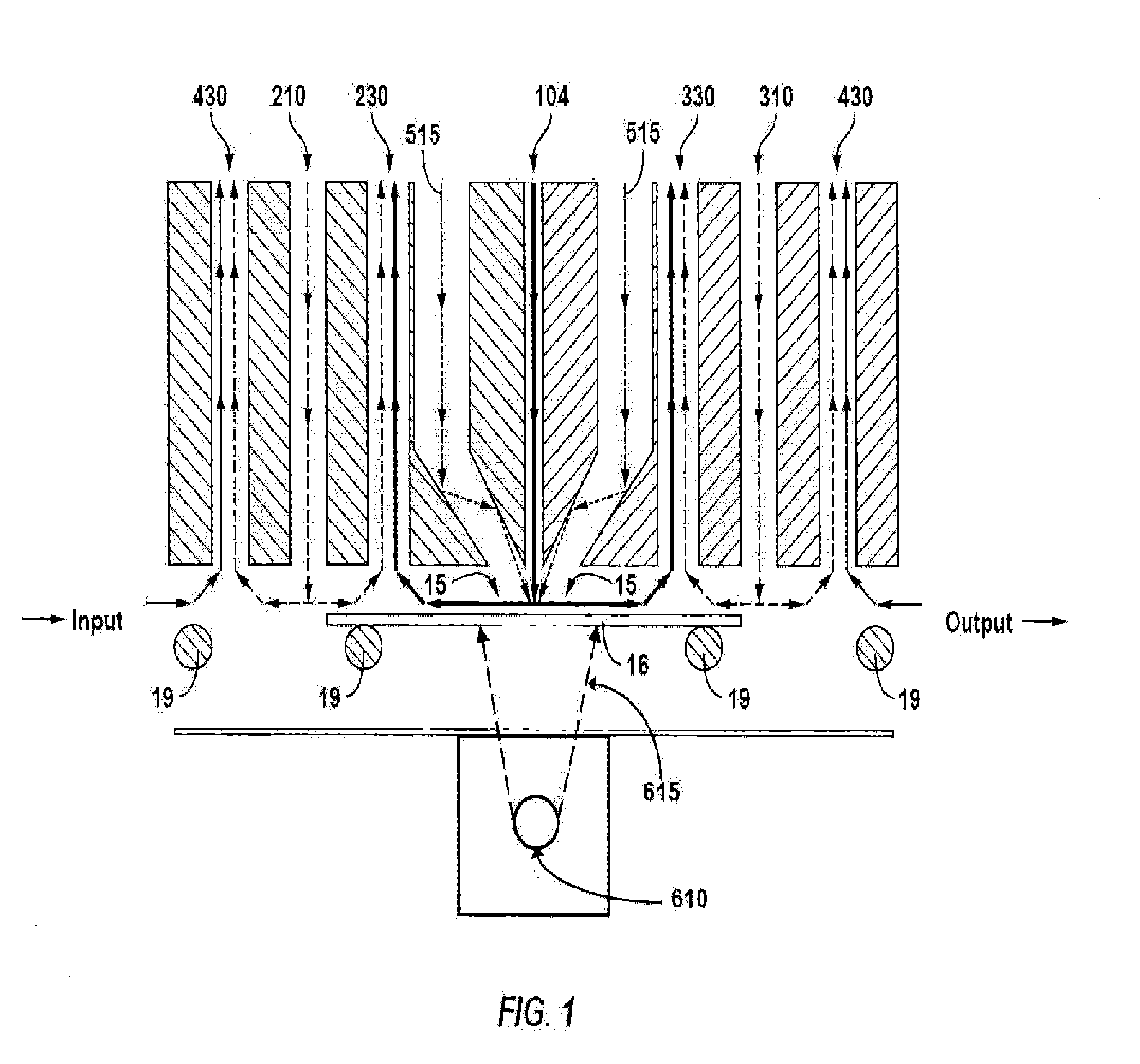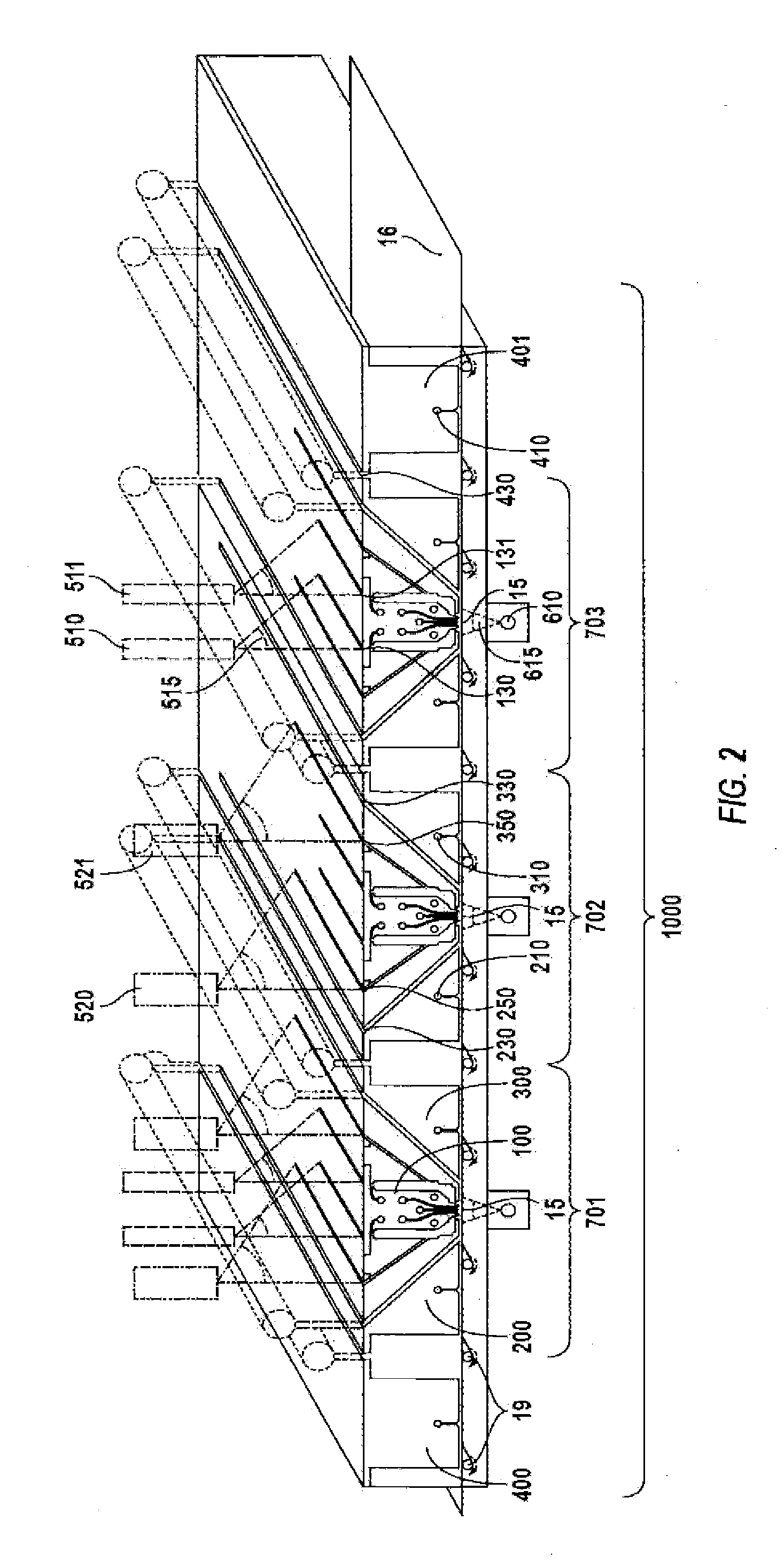Method and apparatus for depositing a thin film
a thin film and deposition method technology, applied in the field of thin film deposition, can solve the problems of poor energy conversion efficiency that does not yield a cost benefit, limited fossil fuel supply, and insufficient to meet the ever-growing demand for this source of energy, and achieves the effects of reducing the reaction rate and throughput, extending the capability of existing equipment, and reducing the effect of gas phase and surrounding surfa
- Summary
- Abstract
- Description
- Claims
- Application Information
AI Technical Summary
Benefits of technology
Problems solved by technology
Method used
Image
Examples
Embodiment Construction
[0022]In accordance with one embodiment of the present invention, a thin film or a multitude of film layers are deposited on a substrate by injecting chemical gases directly and locally on the surface of the substrate while the substrate surface is locally heated by a light beam applied to the opposite surface of the substrate. In other words, if the chemical gases are deposited on top of the substrate, heat is applied by a light beam situated under the substrate (or vice-versa). In this embodiment, the objective is to have the chemical deposition occur by thermal pyrolysis rather than photolytic interaction.
[0023]In some embodiments, the substrate is moved at a constant speed relative to a line source injecting the chemical gas. Film deposition may be carried out at or near atmospheric pressure in a chamber that is purged using an inert gas. Continuous processing in an open in-line system may be carried out in a controlled atmosphere using inert gas purge for isolation from ambient...
PUM
| Property | Measurement | Unit |
|---|---|---|
| temperature | aaaaa | aaaaa |
| surface area | aaaaa | aaaaa |
| wavelengths | aaaaa | aaaaa |
Abstract
Description
Claims
Application Information
 Login to View More
Login to View More - R&D
- Intellectual Property
- Life Sciences
- Materials
- Tech Scout
- Unparalleled Data Quality
- Higher Quality Content
- 60% Fewer Hallucinations
Browse by: Latest US Patents, China's latest patents, Technical Efficacy Thesaurus, Application Domain, Technology Topic, Popular Technical Reports.
© 2025 PatSnap. All rights reserved.Legal|Privacy policy|Modern Slavery Act Transparency Statement|Sitemap|About US| Contact US: help@patsnap.com



